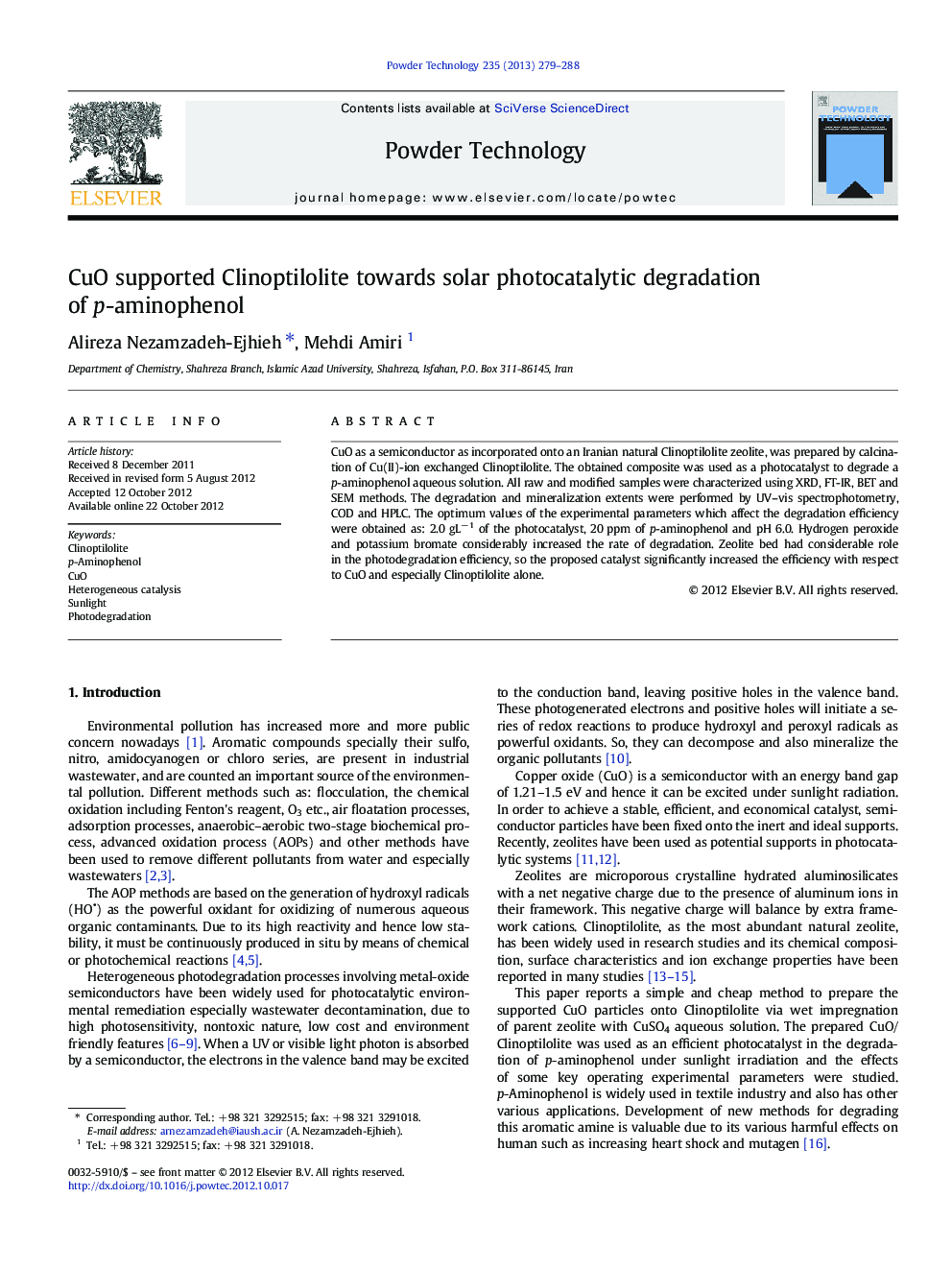| Article ID | Journal | Published Year | Pages | File Type |
|---|---|---|---|---|
| 236641 | Powder Technology | 2013 | 10 Pages |
CuO as a semiconductor as incorporated onto an Iranian natural Clinoptilolite zeolite, was prepared by calcination of Cu(II)-ion exchanged Clinoptilolite. The obtained composite was used as a photocatalyst to degrade a p-aminophenol aqueous solution. All raw and modified samples were characterized using XRD, FT-IR, BET and SEM methods. The degradation and mineralization extents were performed by UV–vis spectrophotometry, COD and HPLC. The optimum values of the experimental parameters which affect the degradation efficiency were obtained as: 2.0 gL− 1 of the photocatalyst, 20 ppm of p-aminophenol and pH 6.0. Hydrogen peroxide and potassium bromate considerably increased the rate of degradation. Zeolite bed had considerable role in the photodegradation efficiency, so the proposed catalyst significantly increased the efficiency with respect to CuO and especially Clinoptilolite alone.
Graphical abstractCuO incorporated onto an Iranian natural clinoptilolite was applied as a photocatalyst in the degradation of p-aminophenol. The degradation extent was followed by UV-vis spectrophotometry and the results were confirmed by COD and HPLC. Zeolite bed showed an important role in the photodegradation process and pure CuO and natural zeolite did not have significant photodegradation efficiency.Figure optionsDownload full-size imageDownload as PowerPoint slideHighlights► Aqueous solution of o-phenylendiamin was degraded by CuO-clinoptilolite and sunlight. ► CuO inside the zeolite is active center for degradation. ► The results of COD, HPLC and UV-Vis confirm the degradation of PAP.
